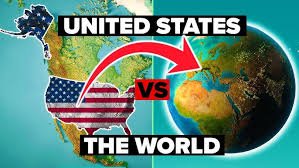
Introduction
For decades, in the contemporary world order, the United States has held a leading role as the world’s sole superpower. American economic, military, cultural, and political power has formed many elements of global power and global norms for decades. Yet, we see increasing friction between the United States and various elements of the global order in the 21st century. The friction occurs in multiple sectors and across geographies, with varying power and ability to challenge U.S. leadership of the global order, including but not limited to trade with China, military alliance frictions with NATO members and other military allies, cybersecurity engagement with Russian hacktivists, ideological battles with seemingly regressive regimes (China, Russia, Iran, North Korea), and climate policy elements of the European Union. We will explore the roots, dynamics, and consequences of the growing confrontations with elements of the global order, and the United States, but especially China, Russia, Iran, North Korea, and parts of the European Union with an understanding of the modern element of global rivalry.
1:Historical Context: From Cold War to New World Tensions
From 1947 to 1991, the Cold War drove the U.S. identity to be defined as a counterforce to the Soviet Union. Following the collapse of the USSR, this led the U.S. to briefly have unrivaled global dominance as the unipolar superpower. In the early 21st century, the U.S. entered into multipolarity with several nations challenging U.S. dominance.
- China grew into an economic giant with ambitions for power.
- Russia resumed its militaristic and nationalistic behavior.
- Iran and North Korea pursued nuclear ambition.European states began to express autonomy, particularly on a range of issues related to digital sovereignty and climate action.
2:The U.S. and China: The Superpower Standoff
2.1 Economic TensionsOne of the more evident sources of dispute is the U.S.-China trade war that commenced during the Trump Administration in 2018. Tariffs were levied on hundreds of billions of dollars worth of goods, while both sides accused the other of unfair trade practices, currency manipulation, and stealing technology.
2.2 Technological RivalryPrimary sources of concern for the U.S. have included barring Chinese tech giants from having access to or being operated in the U.S. (Huawei and TikTok, for example) because of national security claims; restrictions on the export of high-end semiconductors and AI chips by companies based on U.S. soil (Nvidia and AMD); and China’s investment in its own tech companies to achieve self-sufficiency (China’s tech companies do not yet self-sufficient).
2.3 Military PosturingIn the South China Sea and around Taiwan, the U.S. Navy has conducted freedom of navigation operations that question China’s appropriation of maritime territory. The PLA Navy has mobilized and continued to increase naval assets and military exercises particularly around Taiwan.
3:The U.S. and Russia: A Renewed Cold War
3.1 Ukraine War and NATO ExpansionThe U.S. and its NATO allies reacted to the Russian invasion of Ukraine in 2022 with immense resolve. The U.S. contributed billions of military aid to Ukraine and put tight sanctions on Russia, pushing an even larger wedge between Washington and Moscow.
3.2 Cybersecurity and DisinformationRussia has also been accused of conducting cyber attacks on U.S. infrastructure and engaging in disinformation campaigns via social media platforms with the goal to influence elections and divide public opinion.
3.3 Breakdown of Arms ControlThe arms control frameworks made possible by the Cold War are collapsing or under strain and there is concern about re-emerging nuclear arms race between the two enemies, including the protocol of INF (Intermediate-Range Nuclear Forces) treaty and New START treaty.
4:Iran and the U.S.: Nuclear Tensions and Regional Influence
4.1 JCPOA and Its CollapseIn 2015, the Iran Nuclear Deal (JCPOA) was signed under President Obama and would offer Iran sanctions relief in exchange for limitations on its nuclear program. In 2018, however, President Trump withdrew from the JCPOA and Iran resumed uranium enrichment.
4.2 Proxy ConflictsIran and the U.S. face off indirectly in four middle eastern countries: Iraq, Syria, Yemen, and Lebanon. Iran, directly or indirectly, supports militias and groups that directly opposed U.S presence in Iraq and Syria, as well as groups that oppose U.S. occupation efforts in Saudi Arabia and Egypt to Yemen. The U.S. sought to support factions opposed to the Iranian supported militias, as well supporting its own military bases presence in the region.
4.3 Strikes and EscalationThe assassination of the Senior Iranian military commander Qasem Soleimani, authorized by Trump through targeted killing by U.S. drone in 2020, almost triggered open war with Iran. The Iranian response included a ballistic missile strike on U.S. bases in Iraq, again signaling further escalation between the U.S. and Iran.
5:North Korea: The Rogue State Challenge
North Korea continues to be an unusual and unpredictable threat to U.S. interests in East Asia.
Although there have been bilateral summits between Kim Jong-un and U.S. Presidents, North Korea continues to develop its nuclear and missile program further.
The direct missile tests continue to violate international law and are not only provocative to the U.S. but to U.S. allies such as South Korea and Japan.
Most diplomatic efforts have not succeeded, and rival, rogue, pariah, state remains heavily sanctioned but defiant.
6:U.S. and Europe: Allies with Growing Differences
While Europe has been closely connected to the U.S. as a NATO ally and as fellow democracies, several significant policy gaps have emerged in the U.S.-Europe relationship in recent years:
6.1 Digital Sovereignty
The EU has enacted laws like the GDPR and the Digital Markets Act to regulate big tech companies that are mostly American (e.g. Google, Meta, Amazon). This demonstrates Europe’s desire to shield its digital economy against U.S. supremacy.
6.2 Trade and Tariffs
The Trump administration imposed tariffs on European steel and aluminum. Although the Biden administration rolled back some of these tariffs, the trust has been eroded.
6.3 Climate Policy
The U.S. temporarily withdrew from the Paris climate accord under Trump. Although the U.S. has re-entered the Agreement under Biden, Europe is still leading on climate, and even the re-entry into the accord echoes disagreements about how quickly the U.S. and Europe want to decarbonize the global economy.
7:Global South and the Rise of Non-Aligned Nations
Increasingly more countries in Africa, Latin America, and Southeast Asia prefer a neutral diplomatic stance than the choice of alignment in taking sides with the U.S. or China.
They are joining BRICS, or other blocs, to exert influence outside of institutions historically under Western control like the IMF or the World Bank.
The U.S. is often vilified for its colonial and imperial military interventions, while state-owned projects under the BRI are presented by China as a dedication to infrastructure development.
As a basis for understanding their cooperation, many countries are opting for hedging rather than siding in the current geopolitical environment.
8:Economic Tools as Weapons
In contemporary warfare, sanctions, tariffs, and control of international financial systems (such as SWIFT) function as weapons:
As part of its political agenda, the U.S. is deploying sanctions against Russia, Iran, Venezuela, North Korea, et al.
In retaliation, nations are seeking de-dollarization, trading in local currencies and creating alternatives to the U.S. dollar (e.g., China’s digital yuan).
Coercive economic warfare is replacing much of the traditional battlefield.
9:Soft Power and Culture Wars
For decades, the U.S. has wielded soft power—from Hollywood to hot music, universities, and democratic principles—to exert influence over global affairs. As time goes on, however, the ways in which the U.S. dominates are being challenged:
China promotes its style of authoritarian capitalism through its Confucius Institutes and media.
Russia uses propaganda and state-owned media to promote skepticism about the West.
And social media is becoming an increasingly critical battleground for influence and misinformation.
Future Scenarios: Cooperation or Confrontation?
10:Future Scenarios: Cooperation or Confrontation?
In terms of the future, the important question is whether these rivalries may culminate in:
A new global cold war, featuring blocs led by the U.S. and another by China/Russia,
Strategic decoupling, where the respective economic systems split in two, or
A multilateral approach focused on diplomacy and cooperation.
With regard to issues such as climate change, pandemics, and the governance of AI, a global collaborative approach is vastly preferred. But whether the U.S. and its rival countries can ignore conflict in favour of cooperation remains to be seen.
Conclusion
The United States has entered a complex and quickly changing global environment, and the relationships it has with China, Russia, Iran, North Korea, and even European allies are extremely strained. In addition, warfare has changed from competing militarily, through cyberattacks, economic sanctions, trade wars, and soft power.
As these relationships and dynamics unfold, the world’s progress is potentially toward a fractured global order that participates in a more peaceful distribution of power. The U.S. will have to share power and there’s no longer a belief that the U.S. leads the world – leading means as the U.S. retains strength, encourages power-sharing, and encourages listening. To accomplish this, the U.S. can hope to protect stability, create peace, and defend the values it has claimed to espouse for quite a long time.


